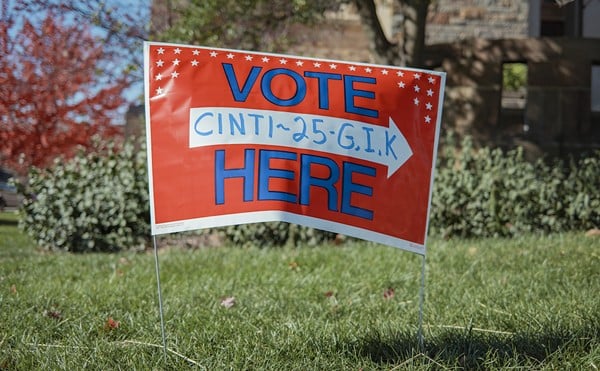After reading "Armed and Next to Us" (issue of April 6-12), I was reminded again of how we are a nation of diverse cultures and how unaware we are of each other's cultures. I grew up in rural Pennsylvania in the 1950s and '60s. Nearly every home had a gun, yet except for hunting season it was unusual to see someone carrying their gun in public.
For reasons that were instilled in our community long before I was born, guns weren't considered a thing to be feared or a thing to be used against other people. So I grew up thinking of guns more as tools than weapons.
I was taught the fundamental rules of gun safety listed in your article by the time I was 12 years old. The instructors taught me to always point a firearm in a safe direction; keep your finger off the trigger until you're ready to shoot; keep the weapon unloaded until you're ready to shoot or carry it; never assume a gun is empty until you've checked it; and treat an unloaded gun as if it were loaded. But they weren't trained by the NRA, local law enforcement or the state — they were my father and older brother. If I screwed up or didn't take these rules seriously, I had a real "ass kicking" authority to answer to.
Even though I've lived in Ohio for 30 years, there is still a sense of culture shock in how the state government treats law-abiding citizens here.
There is somewhat of a sense that the state feels that the citizens of Ohio can't be trusted to do the right thing on their own. While rules and regulations are necessary in maintaining a stable society, over-regulation by the state can create situations that are based on fear instead of common sense.
The fear and loathing surrounding Ohio's conceal and carry law looks to be a result of that over-regulation. It is common sense that it's wrong for only the bad guys to carry guns, as it is common sense that it's wrong to prohibit the good guys from being able to protect themselves.
But perhaps the most important example of common sense is that you don't deny and discourage law-abiding citizens from taking responsibility for their own safety without creating a body of citizens that have no choice but to base their decisions on fear.
Thanks for Surprising Article
Ben L. Kaufman's cover story "Armed and Next to Us" (issue of April 6-12), being well written, factual and objective, was written by a well-respected Cincinnati area newspaper veteran and writer. I appreciate the publishing of this article, the contents of which might be surprising to some individuals.
Certainly, credibility to this reporting was derived from Ed Boldt, counsel to Hamilton County Sheriff Simon Leis Jr., who provided statistical analysis in an unbiased manner. My appreciation is extended to the CityBeat staff and most certainly to Kaufman, whose story was based on personal experience and knowledgeable sources.
Influence of Religious Right
Kudos to John Fox for his informative editorial on Ohio's religious right and the Ohio Restoration Project ("Ohio Religious Right: 'Welcome to Our World,' " issue of April 6-12). The influence that the religious right has with current office-holders can partly be seen in Gov. Taft's proposal to increase state education funding for charter schools. The religious right is sure to become bolder and harder to appease with each success they have.
You can see in the present day Middle East how people are oppressed when religious authorities have too much power. The experience of pre-1789 France also provides a sobering record of what happens when church and state aren't sufficiently separated.
Americans should not assume that excessive interference by religious zealots couldn't happen here, for many people behind the Ohio Restoration Project are dangerous. These people have quite a mania for control and censorship, and they will reduce our liberties if they're not opposed.
At the federal level, the excessive influence of the religious right was seen last month in the Terri Schiavo case, where Congress passed and President Bush signed legislation later termed unconstitutional by a federal appeals court judges.
I hope other CityBeat readers will, like me, write their elected officials and speak up against undue influence by the religious right.
Paying the Price for Smoking
How unfortunate to see the misconceptions of Samantha Phillipe about smoking ("Keep on Puffing," Letters, issue of April 6-12). Prohibition of smoking is not the issue surrounding the city's proposed smoking ban — her smoking shortening the lives of others is the issue.
As with most addicted people, she is in denial of the problem and wants to explain it away. The effects of second-hand smoke are debatable. The bartenders and waiters who have to work in these conditions ought to have our pity.
Phillipe has a right to smoke, but she doesn't have a right to cause harm to innocent people. It's a justice issue.
Only 20 percent of people smoke. Why should most of us pay the price?





